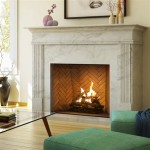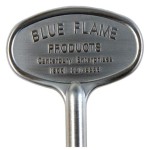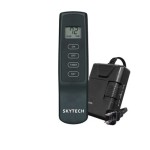Can You Paint a Brass Fireplace Screen? A Comprehensive Guide
Brass fireplace screens offer a touch of elegance and serve as a protective barrier against sparks and embers. However, over time, the brass finish can become tarnished, dated, or simply clash with evolving interior design preferences. Consequently, many homeowners consider painting their brass fireplace screens to achieve a more contemporary or coordinated aesthetic. While painting a brass fireplace screen is feasible, it requires careful preparation, appropriate materials, and meticulous execution to ensure a durable and visually appealing result. This article provides a comprehensive guide to painting brass fireplace screens, outlining the necessary steps and considerations.
Understanding the Challenges of Painting Brass
Brass, an alloy primarily composed of copper and zinc, presents unique challenges for painting due to its smooth, non-porous surface. Paint adhesion is a primary concern, as the slick surface of brass inherently resists strong bonding. Without proper surface preparation, paint is likely to chip, peel, or scratch easily, rendering the painting project unsuccessful. Furthermore, brass is prone to oxidation, leading to tarnish that can interfere with paint adhesion. Thorough cleaning and priming are, therefore, crucial steps in ensuring a long-lasting and aesthetically pleasing finish.
The high heat exposure associated with fireplace screens introduces another layer of complexity. Ordinary paints are not designed to withstand elevated temperatures and may blister, crack, or emit harmful fumes when exposed to heat. Selecting a high-heat-resistant paint formulated for fireplaces and stoves is essential for safety and durability. Ignoring this factor can lead to a fire hazard and necessitate costly repairs or replacements.
Finally, the intricate designs often found on brass fireplace screens can make painting a meticulous and time-consuming task. Reaching into crevices and ensuring even coverage without drips or pooling requires patience and attention to detail. Proper application techniques, such as using multiple thin coats, are essential for achieving a professional-looking finish.
Essential Steps for Preparing a Brass Fireplace Screen for Painting
Successful painting hinges on thorough preparation. The first step is to remove the fireplace screen from its mounting and place it on a protected work surface. Covering the work area with drop cloths or newspapers prevents paint spills and facilitates easy cleanup. If the screen has glass panels or other delicate components that cannot be removed, carefully mask them off with painter's tape. Precision in masking ensures clean lines and prevents paint from marring unintended surfaces.
The next essential step involves cleaning the brass surface. Over time, brass accumulates dirt, grime, and oxidation, all of which can impede paint adhesion. Begin by wiping down the screen with a mild detergent and warm water to remove loose debris. For more stubborn grime, a specialized brass cleaner may be necessary. Follow the manufacturer's instructions carefully and ensure that all cleaner residue is thoroughly rinsed away. Allow the screen to dry completely before proceeding to the next step.
Sanding the brass surface is crucial for creating a textured profile that promotes paint adhesion. Use fine-grit sandpaper (220-grit or higher) to lightly scuff the entire surface of the screen. Focus on areas with heavy tarnish or imperfections. The goal is not to remove the brass finish entirely, but rather to create microscopic scratches that provide a mechanical key for the primer and paint to grip onto. After sanding, wipe down the screen with a tack cloth to remove any sanding dust. Dust particles can interfere with paint adhesion and create an uneven finish.
Following sanding, degreasing the surface is extremely important. Brass can trap oils from handling or cleaning products, which can repel paint. Use a degreasing agent, such as mineral spirits or denatured alcohol, to thoroughly clean the screen. Apply the degreaser with a clean cloth and wipe the surface until no residue remains. Allow the degreaser to evaporate completely before moving on to priming.
Selecting the Right Primer and Paint
Choosing the correct primer and paint is paramount for achieving a durable and aesthetically pleasing finish on a brass fireplace screen. The primer acts as an intermediary layer, promoting adhesion between the brass surface and the topcoat paint. Select a primer specifically formulated for non-ferrous metals, such as brass, copper, or aluminum. These primers typically contain etching agents that chemically bond to the metal surface, providing a superior foundation for the paint.
When selecting a primer, consider the type of paint you intend to use as the topcoat. Some primers are designed to work best with specific types of paint, such as oil-based or latex-based formulations. Consult the primer manufacturer's recommendations to ensure compatibility and optimal performance. Apply the primer in thin, even coats using a brush, roller, or spray gun, following the manufacturer's instructions regarding drying time. Multiple thin coats are generally preferable to one thick coat, as they minimize the risk of drips and promote uniform coverage.
Selecting the right paint involves considering both aesthetics and functionality. For fireplace screens, high-heat-resistant paint is a non-negotiable requirement. These paints are formulated to withstand temperatures of up to 1200 degrees Fahrenheit, preventing blistering, cracking, and the release of harmful fumes. Look for paints specifically labeled for use on fireplaces, stoves, grills, or other high-heat applications. These paints are typically available in spray cans or liquid formulations.
The choice between spray paint and liquid paint depends on personal preference and the complexity of the screen's design. Spray paint offers convenience and ease of application, particularly for intricate details and hard-to-reach areas. However, liquid paint allows for greater control over the application process and may provide a thicker, more durable finish. If using liquid paint, choose a high-quality brush or roller designed for smooth application. Regardless of the chosen method, apply the paint in thin, even coats, allowing each coat to dry completely before applying the next. Multiple thin coats provide better coverage and durability than a single thick coat.
Applying Paint and Achieving a Professional Finish
The application of paint is a critical stage in transforming a brass fireplace screen. Before initiating the painting process, ensure that the work area is well-ventilated and that you are wearing appropriate personal protective equipment, such as a respirator mask and gloves. These precautions protect against inhaling paint fumes and minimize skin contact with potentially harmful chemicals.
When using spray paint, shake the can thoroughly for at least two minutes to ensure that the pigment and propellant are properly mixed. Hold the can approximately 10-12 inches away from the screen and apply the paint in smooth, even strokes, overlapping each stroke slightly to avoid gaps. Avoid holding the can in one place for too long, as this can lead to drips and runs. Work your way across the screen, paying attention to intricate details and hard-to-reach areas. Allow the first coat to dry completely before applying a second coat. Multiple thin coats are essential for achieving complete coverage and a durable finish.
If using liquid paint, choose a high-quality brush or roller designed for smooth application. Dip the brush or roller into the paint, removing any excess by wiping it against the edge of the paint can. Apply the paint in thin, even strokes, following the contours of the screen's design. Avoid applying too much pressure, as this can cause the paint to build up in certain areas. Use a small brush to reach into intricate details and corners. Allow the first coat to dry completely before applying a second coat. As with spray paint, multiple thin coats are preferable to a single thick coat.
After applying the final coat of paint, allow the screen to dry completely according to the manufacturer's instructions. Drying times can vary depending on the type of paint, humidity, and temperature. Avoid touching or handling the screen during the drying process, as this can mar the finish.
Once the paint is completely dry, carefully remove any masking tape. Use a sharp utility knife to score along the edges of the tape before peeling it off, preventing the paint from chipping or peeling along with the tape. Inspect the screen for any imperfections, such as drips, runs, or uneven coverage. If necessary, lightly sand the affected areas with fine-grit sandpaper and touch up with paint.
Finally, before reinstalling the fireplace screen, consider applying a clear coat sealant. A sealant provides an extra layer of protection against scratches, chips, and heat damage, extending the life of the painted finish. Choose a sealant that is specifically designed for high-heat applications and is compatible with the type of paint used. Apply the sealant in thin, even coats, following the manufacturer's instructions.
By following these steps, it is possible to transform a dated or tarnished brass fireplace screen into a visually appealing and functional focal point. The key to success lies in meticulous preparation, careful material selection, and patient execution.

How To Paint A Brass Fireplace Screen Addicted 2 Decorating

Fireplace Door Update With Spray Paint Roots Wings Furniture Llc

How To Paint A Brass Fireplace Screen Addicted 2 Decorating

How To Spray Paint A Brass Fireplace Insert Erfly House

Fireplace Door Update With Spray Paint Roots Wings Furniture Llc

How To Spray Paint A Brass Fireplace Bright Green Door

Brass Fireplace Update East Coast Creative

How To Paint A Brass Fireplace Screen Without Removing It Create Eoy

How To Paint Metal Fireplace Surround Four Generations One Roof

How To Spray Paint A Brass Fireplace Insert Erfly House








